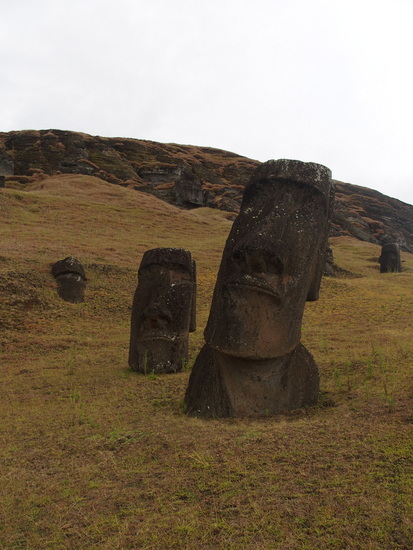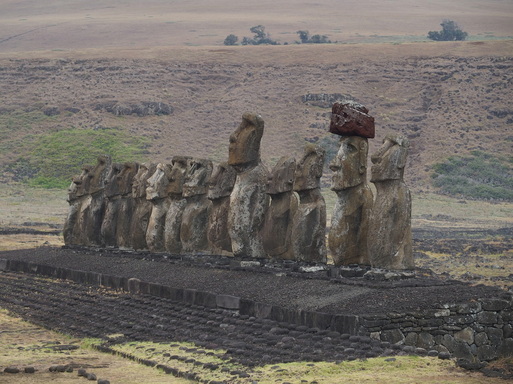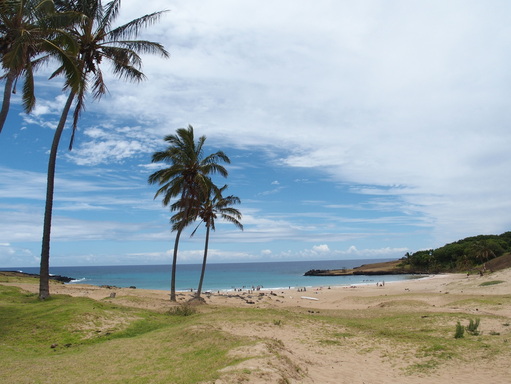In the last 10 years, there has also been an overhaul to the islands garbage procedures. Prior to that it was primarily dumped in a heap and burned. Today, there is an intensive recycling program in which every last possible recyclable piece is removed and compacted. Twice a year a 20 ton compacted pile is sent to the Chilean mainland and sold for processing into other goods.
Our first stop of the day was Ranu Raraku, the quarry from which all of the 1000’s of statues on the island were carved. At first I was disappointed to see a number of busses full of people pull up at the same time. We’ve been completely spoiled and are often the only people at many of the sites that we’re visiting. However, that changed when I found out that they are on a 34 day National Geographic world tour! Hmmm, maybe I need to start saving up for this one…
The quarry was fascinating as there were statues in all stages of the carving process, many abandoned midway when the society that was working on them collapsed. Ata described the process of carving the majority of the statues out of the mountainside from a standing position, using the removed fragments of rock to create a ramp on which to slide the near finished statue down to the base of the hill for final carving and then transport. It’s believed that the carving process primarily occurred during the rainy months (june/july) because the moisture softened the rock and made it more flexible, which had two results. It was easier to cut with their stone tools and the flexibility made it less likely to develop fractures during the carving process. Experiments show that it likely took a few years for the carving process to be complete which is particularly impressive considering the number of statues on this island!
Our next stop was the site Tonariki. Many years ago, this place was devastated by a tsunami that had tossed, broken and buried many of the statues. In the 90’s, it was decided that this would be this would be the first site that would be completely restored and Claudio Cristino would be the one to head it up. This was a tipping point on the island, and it was the restoration of this particular site that renewed the Rapa Nui people’s pride in their culture. Interestingly enough, due to its proximity to the quarry, there is the belief that this particular altar may have been erected for the stoneworkers of the time and so it makes for an interesting cyclical comparison. We spent about 30 minutes (again some of the only people there) wandering around, mostly in silence, absorbing the enormity of this place.




 RSS Feed
RSS Feed
